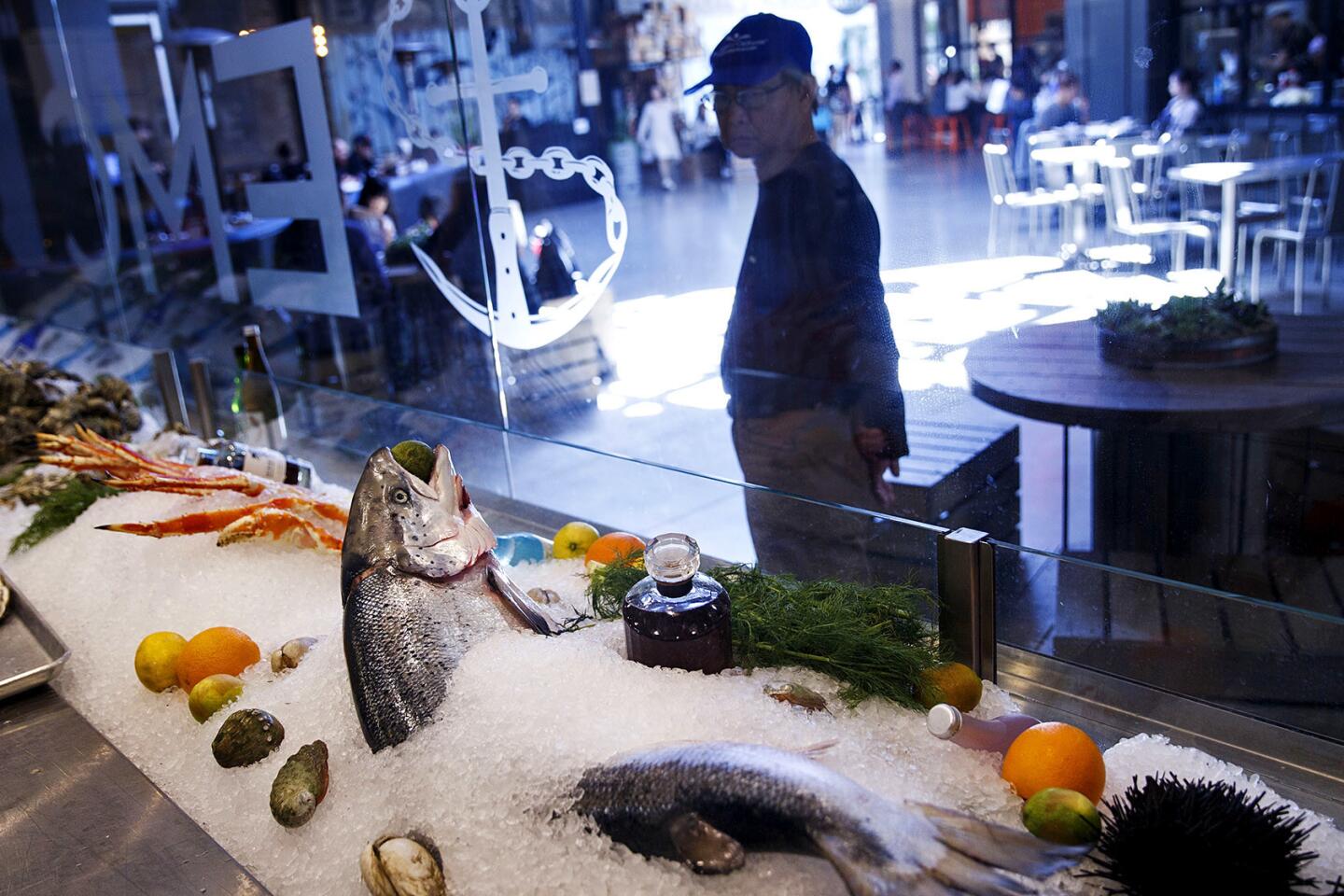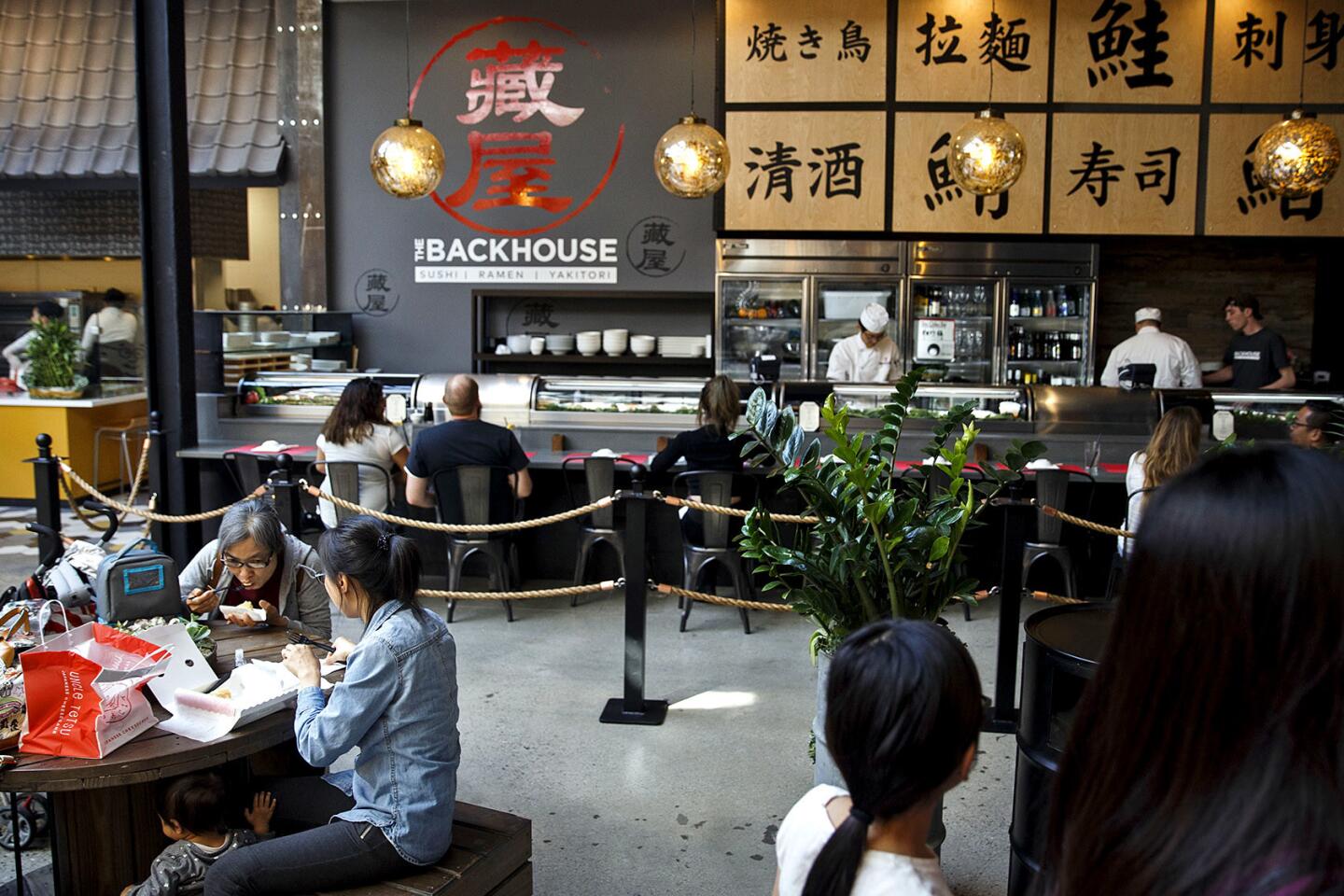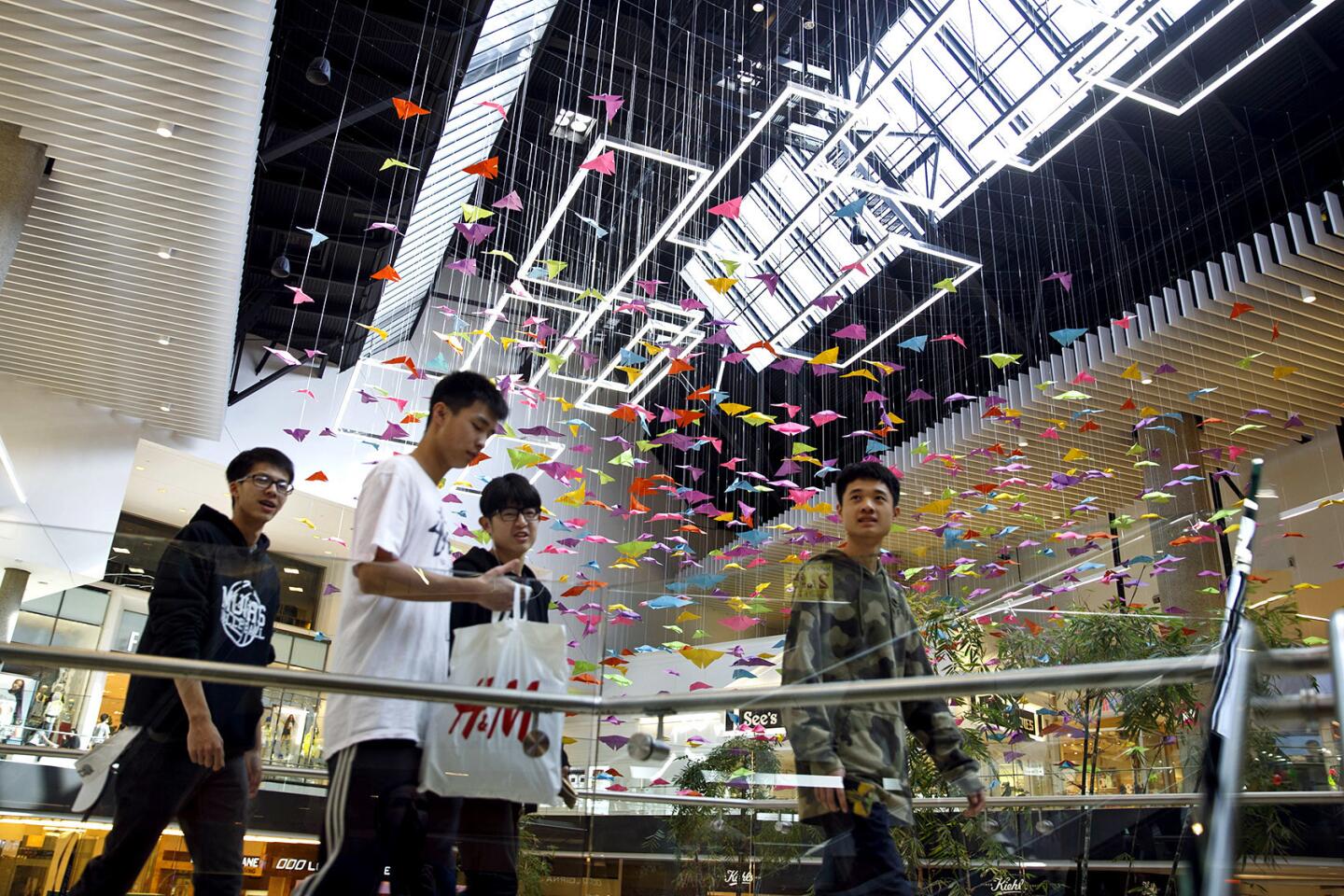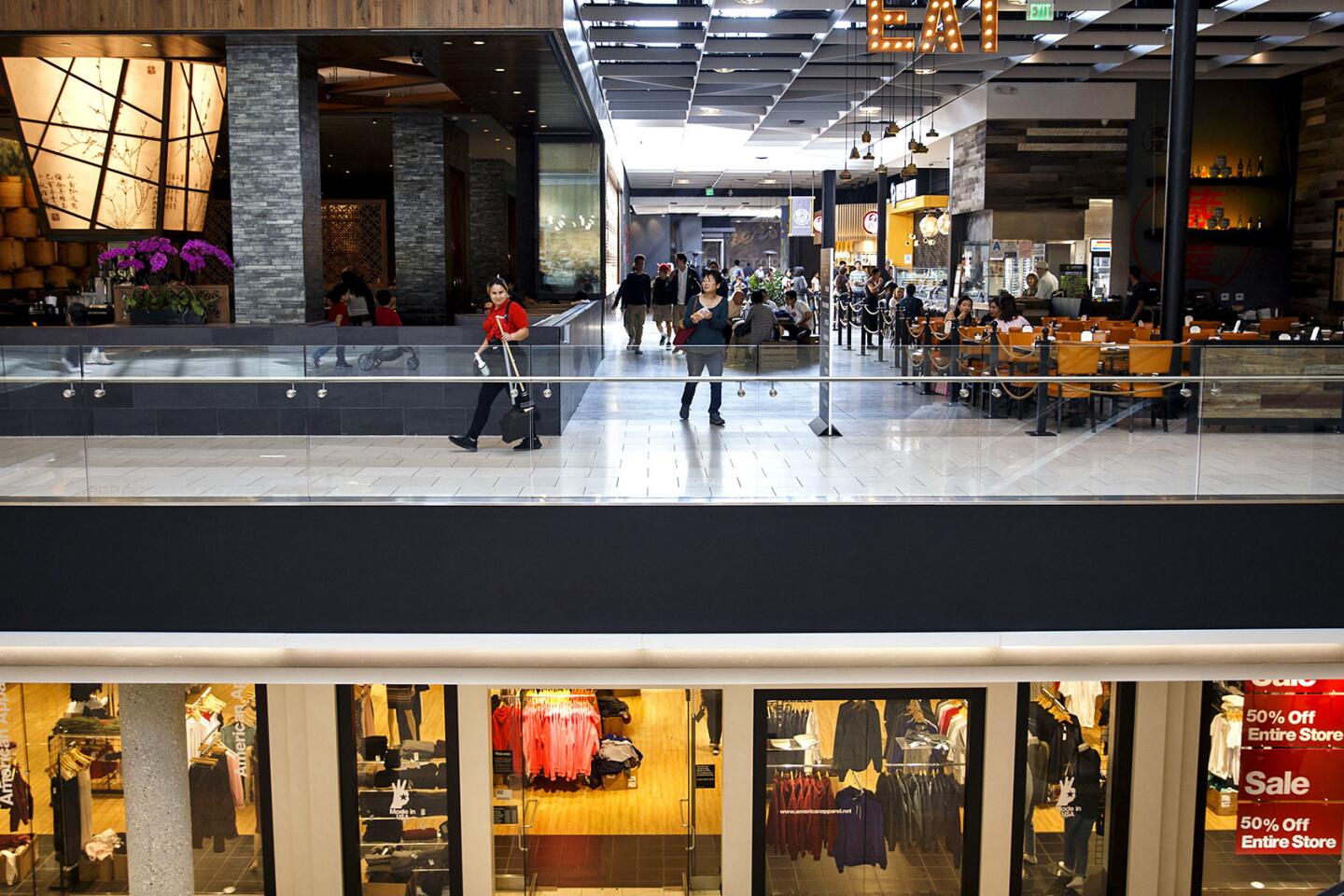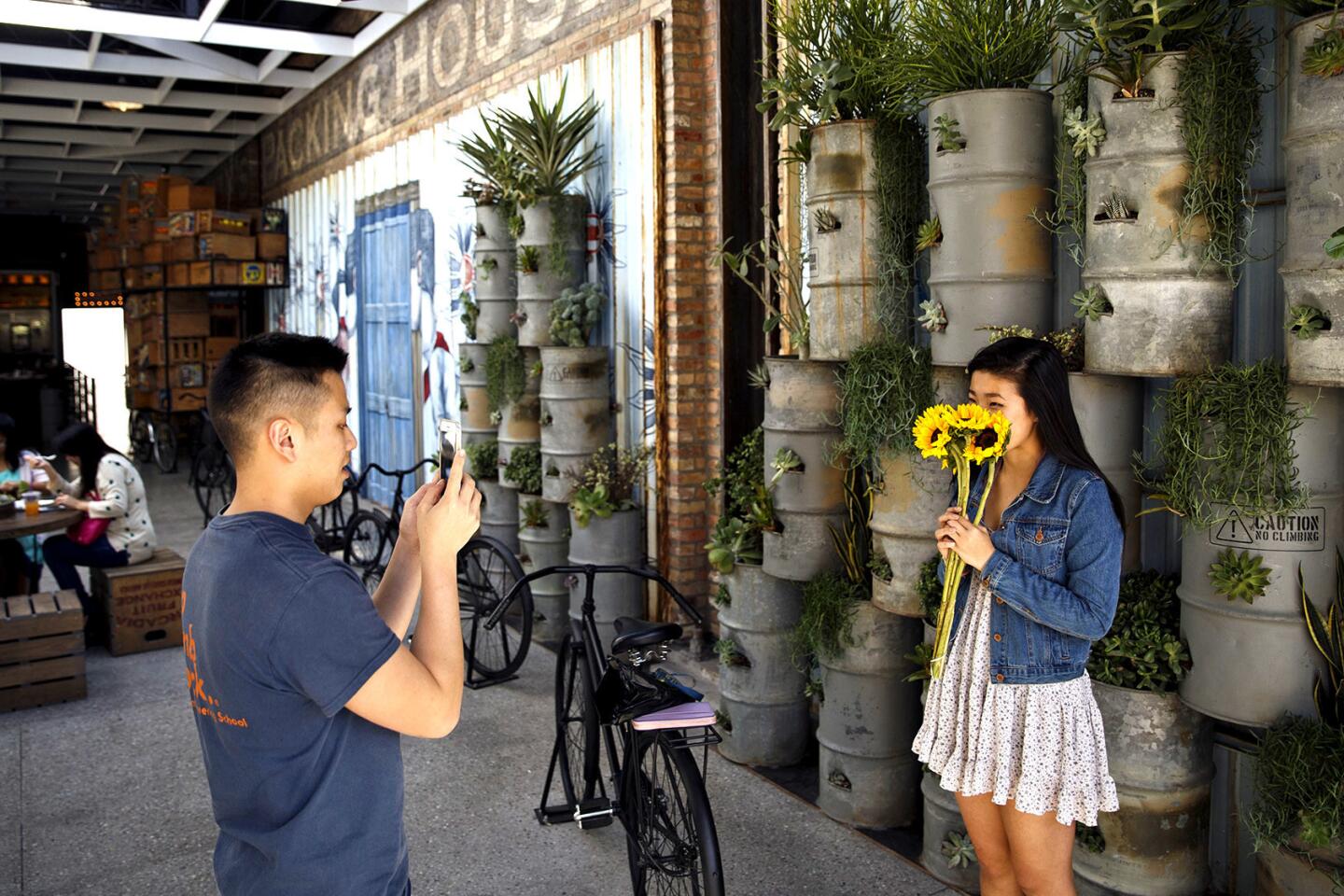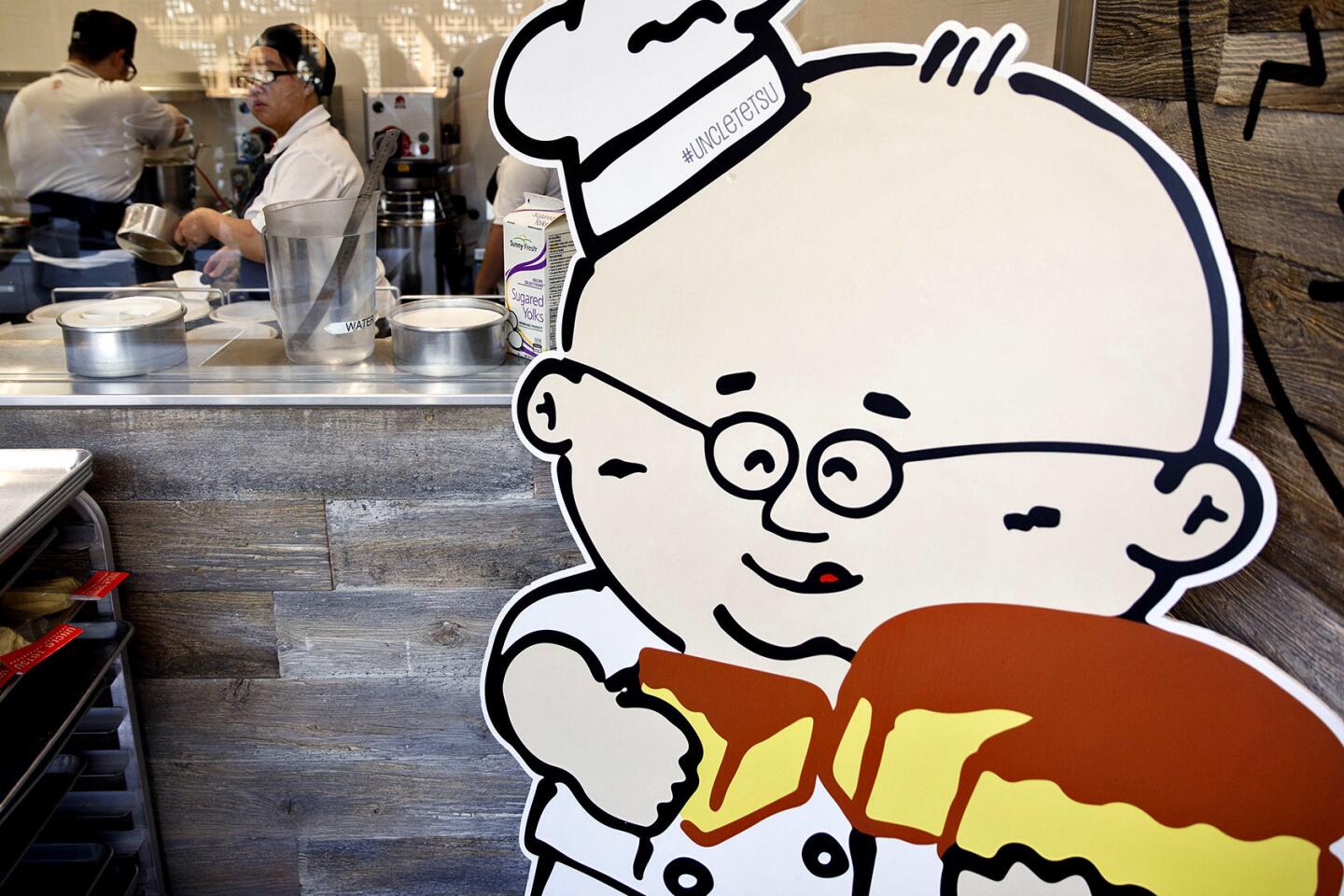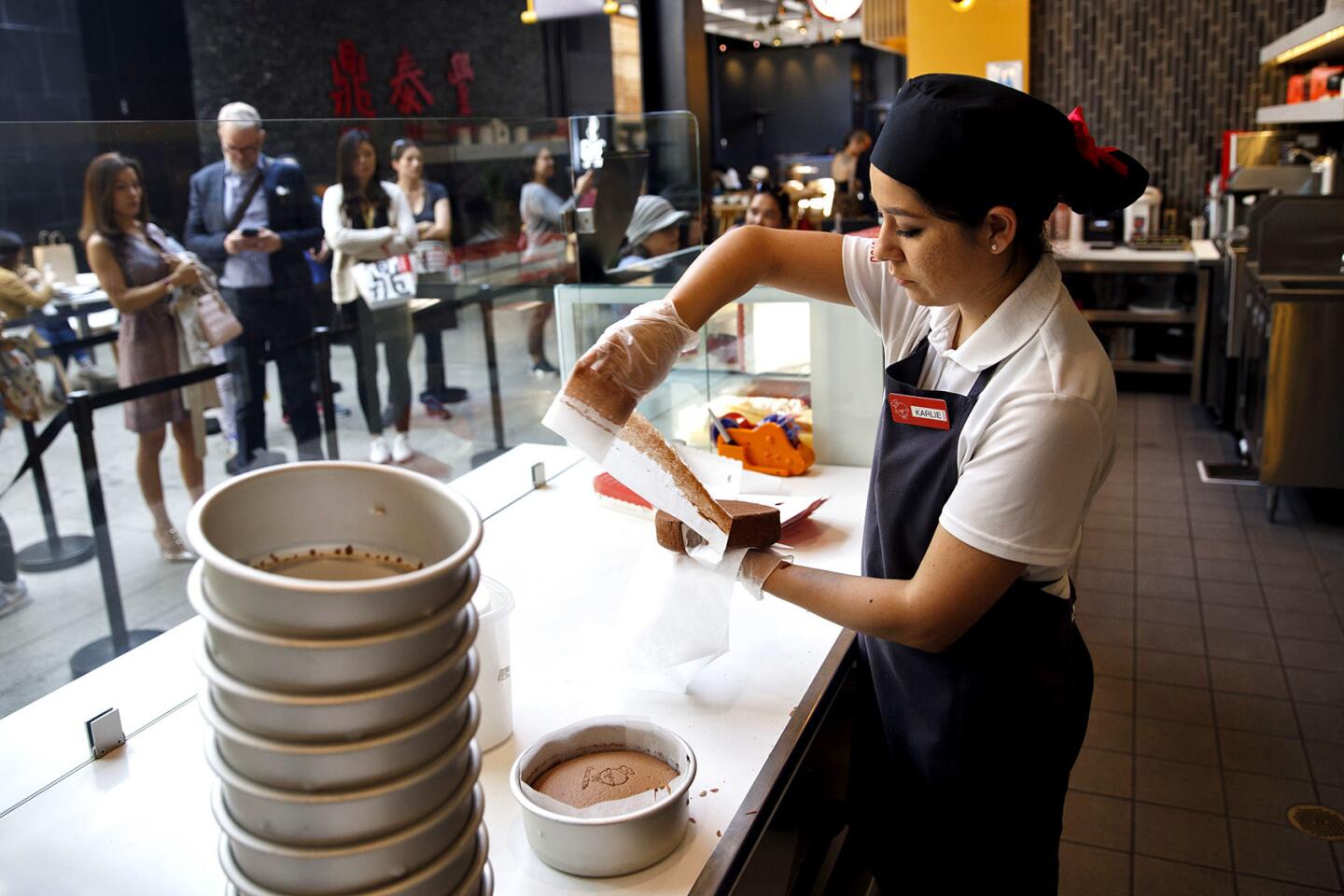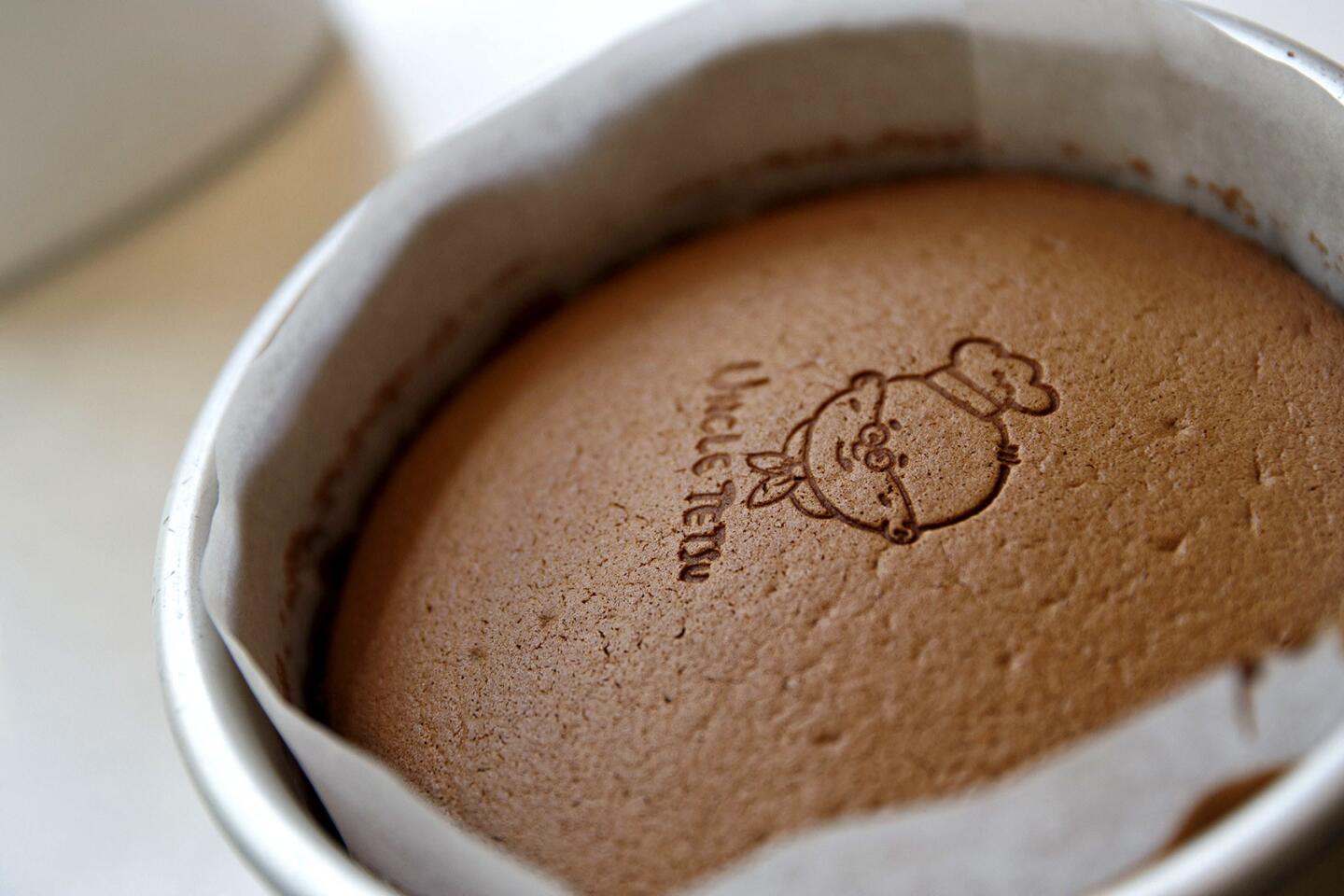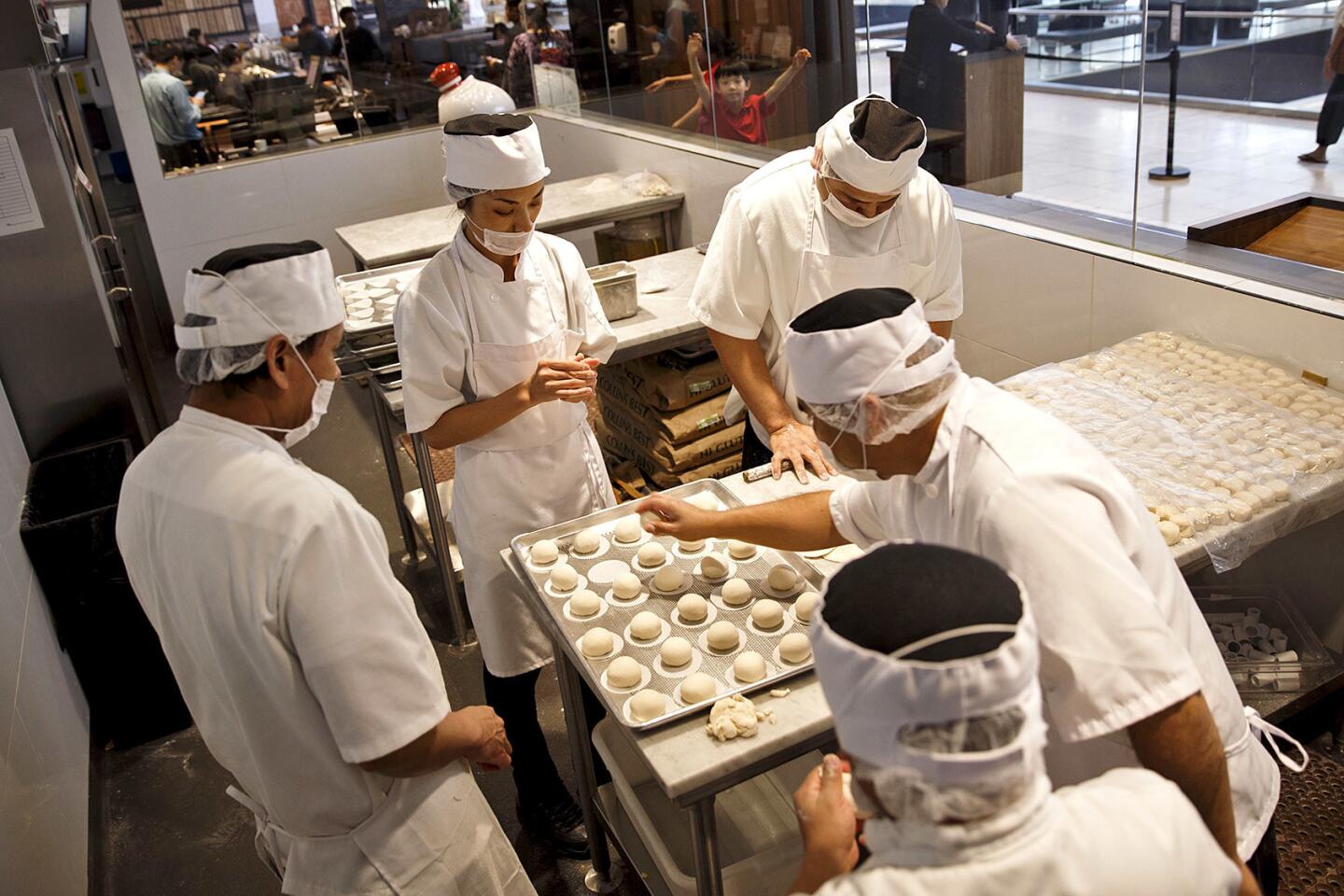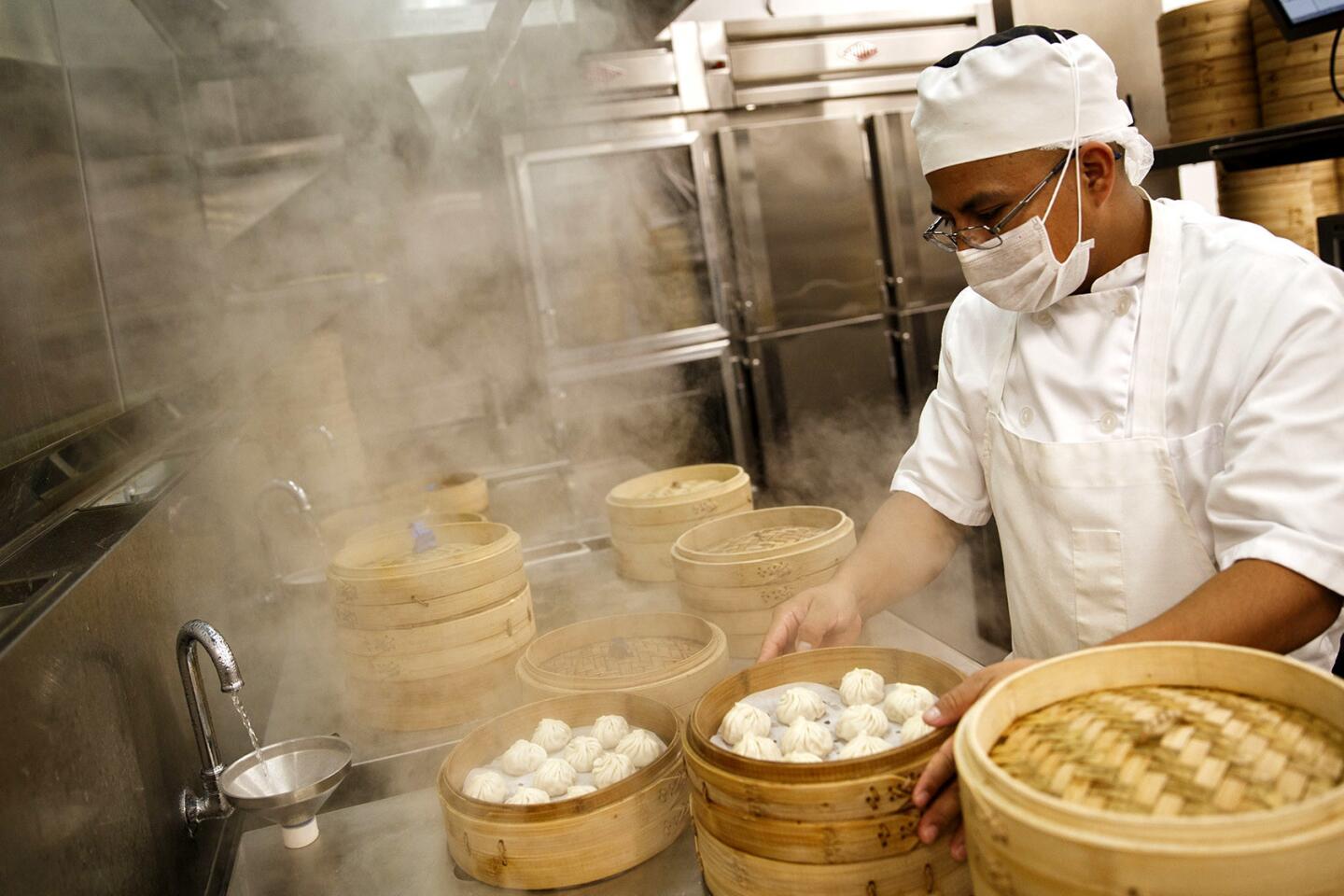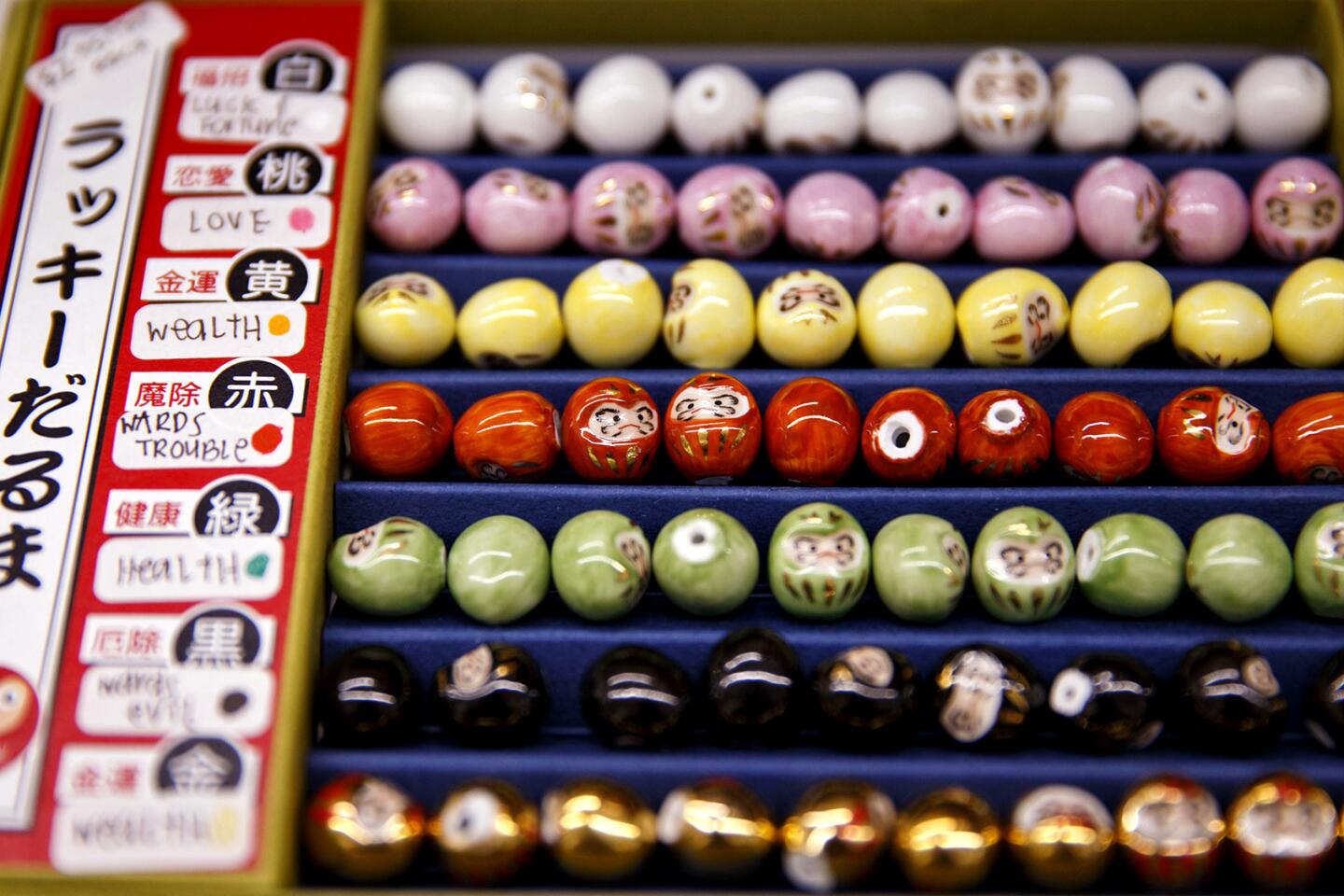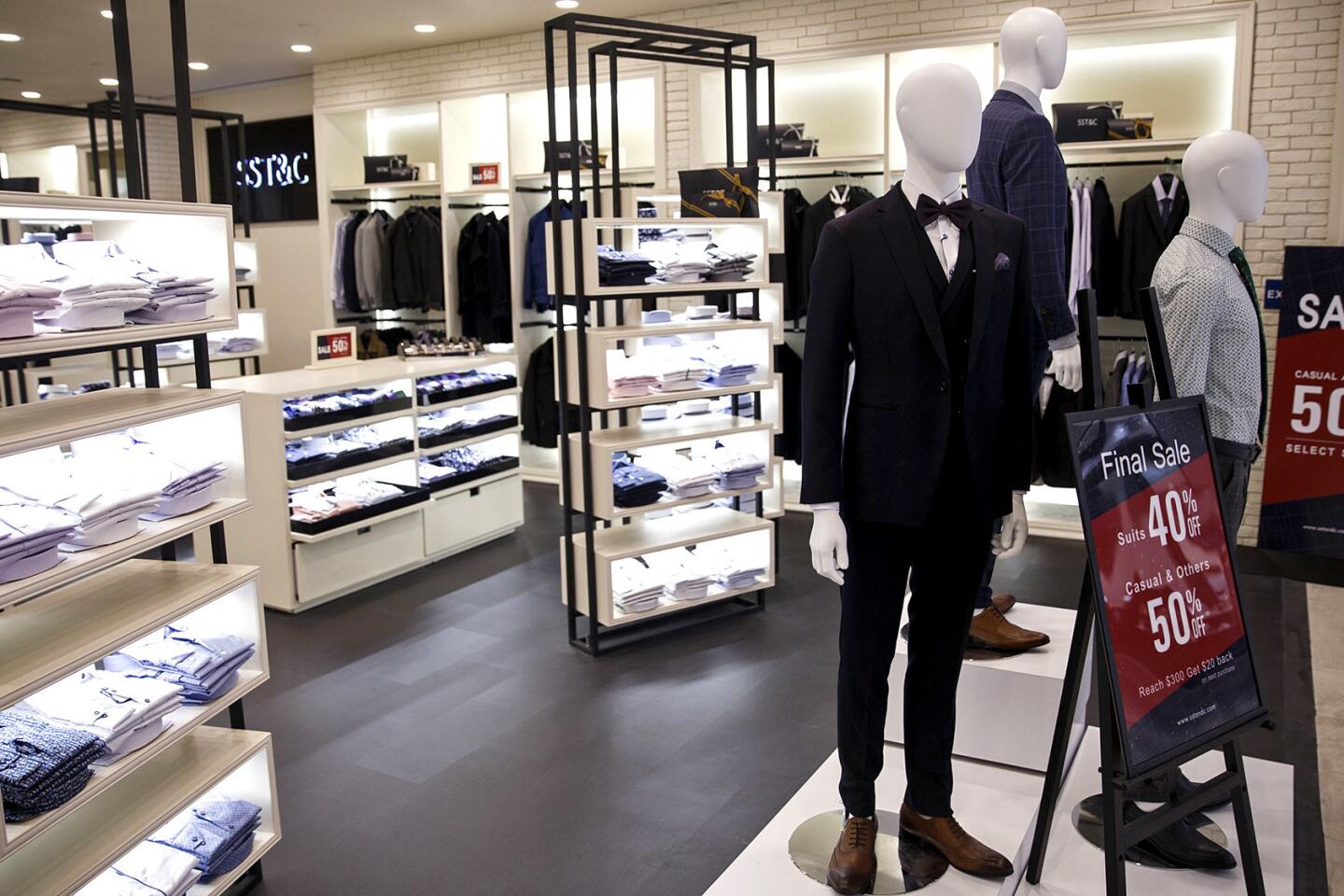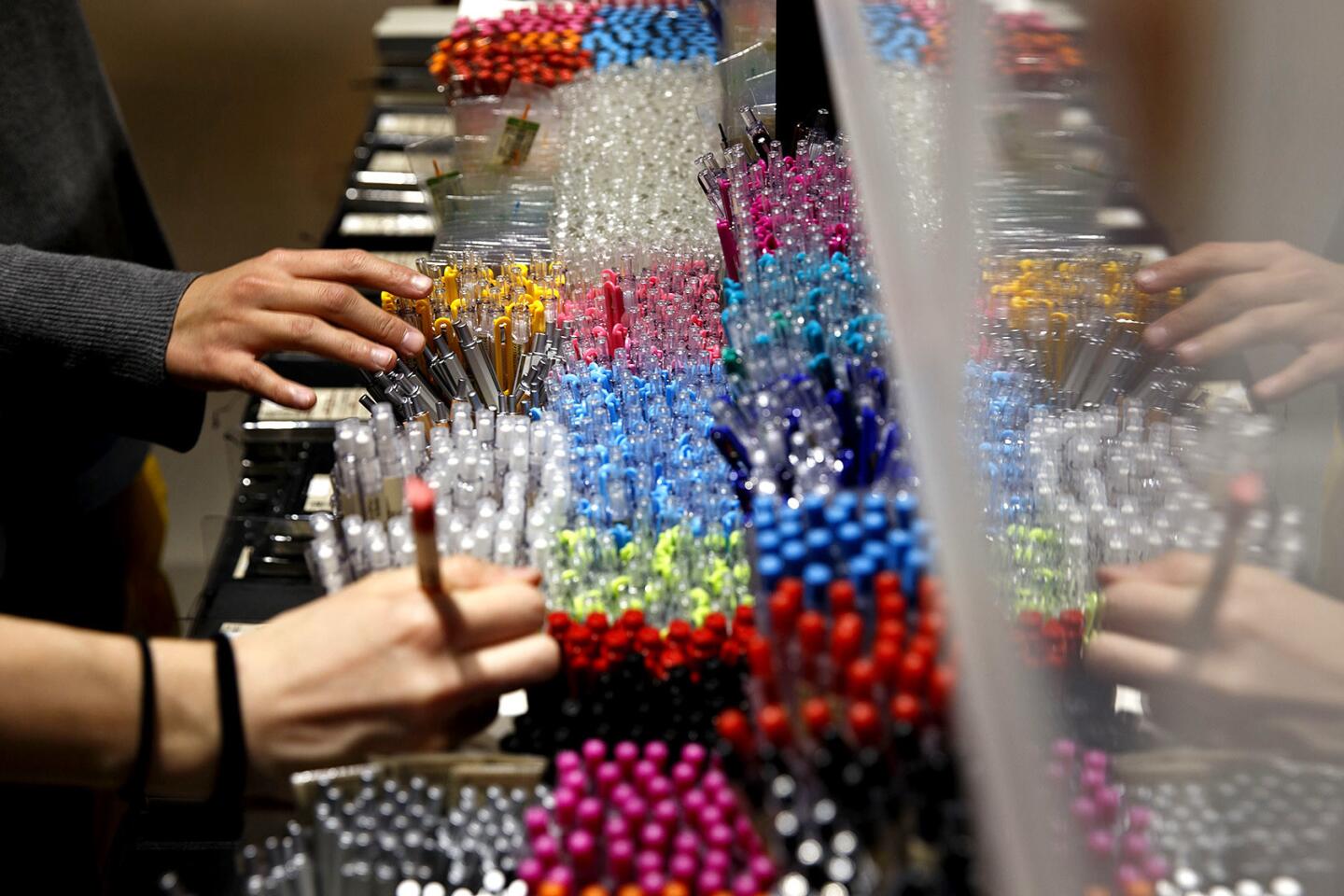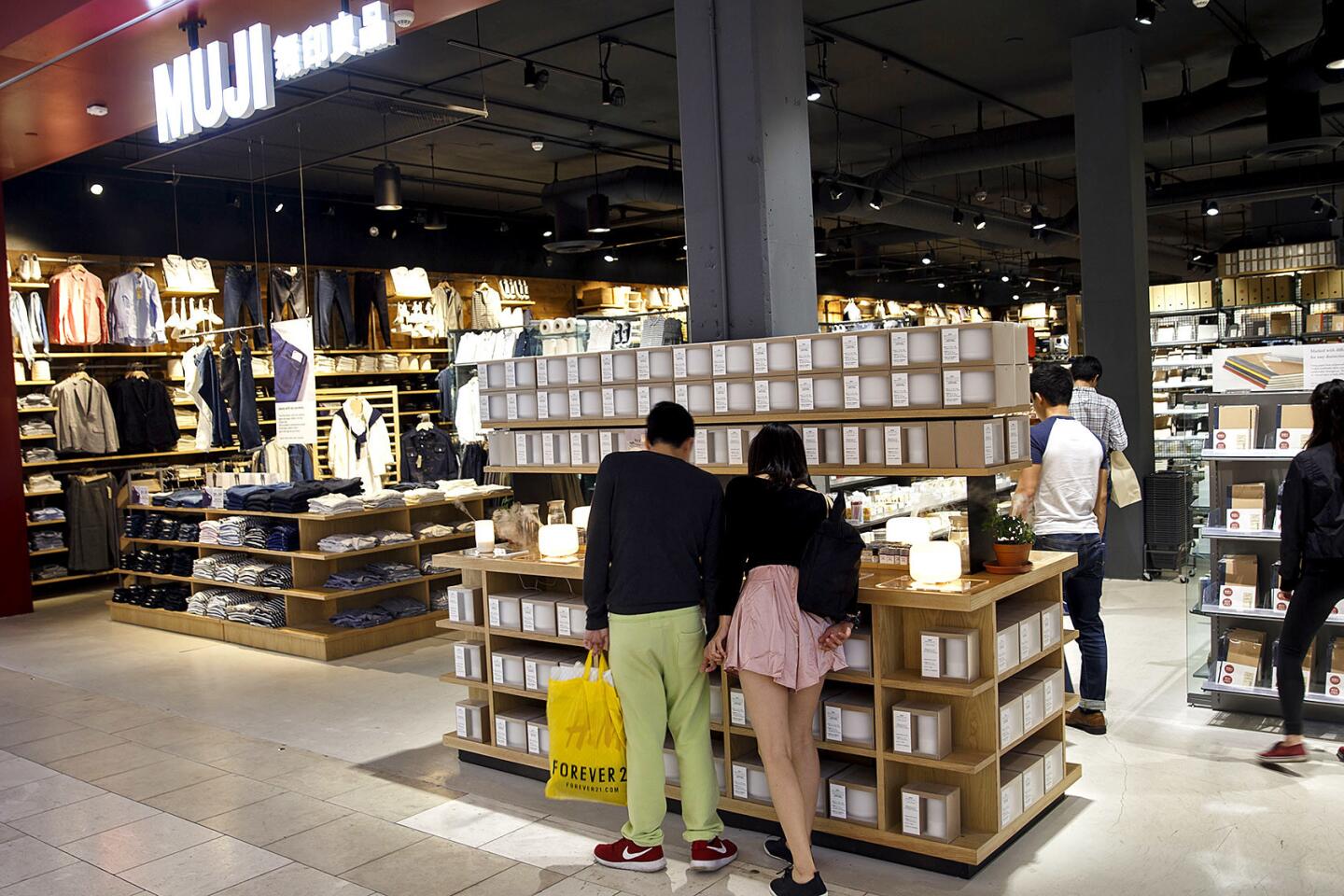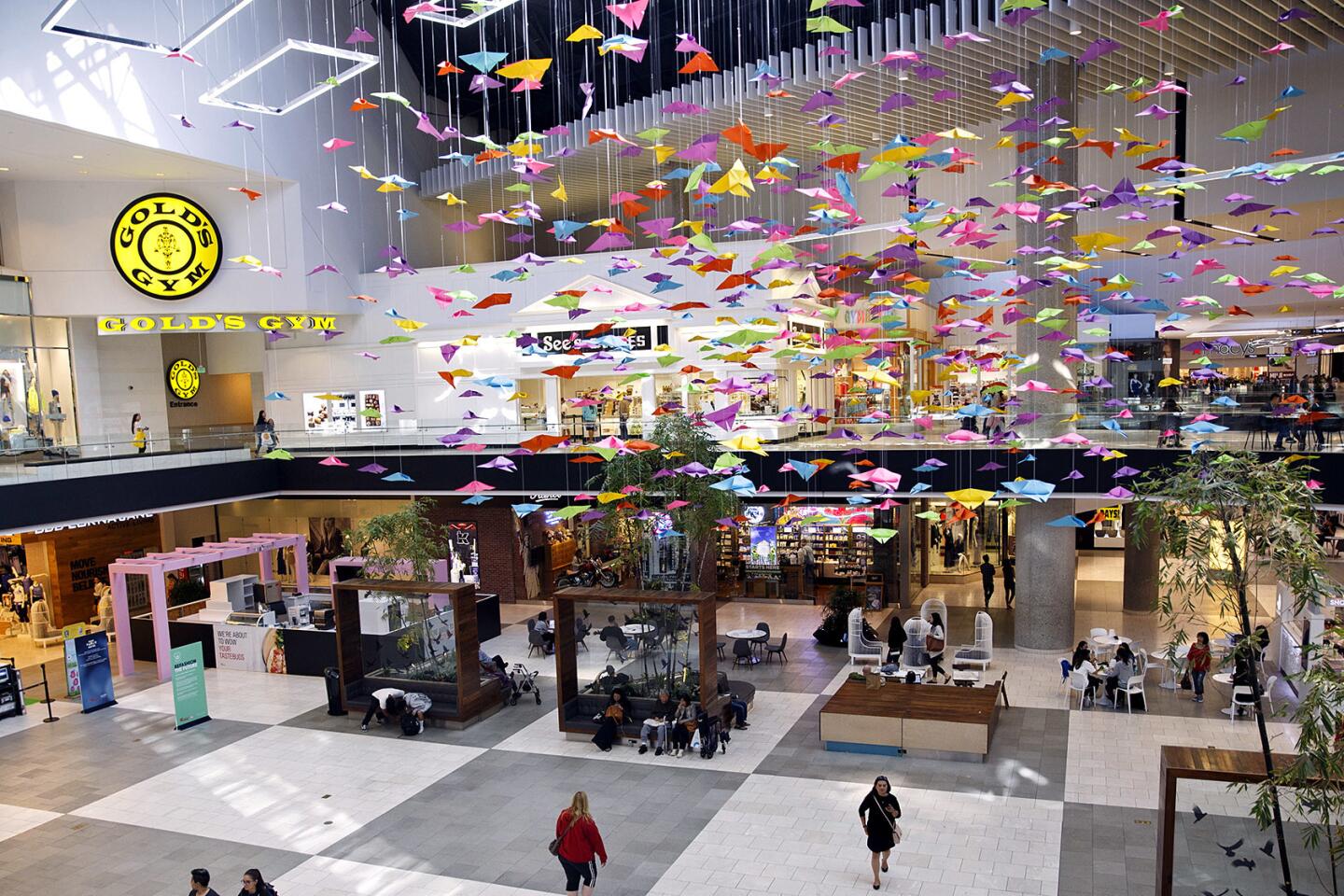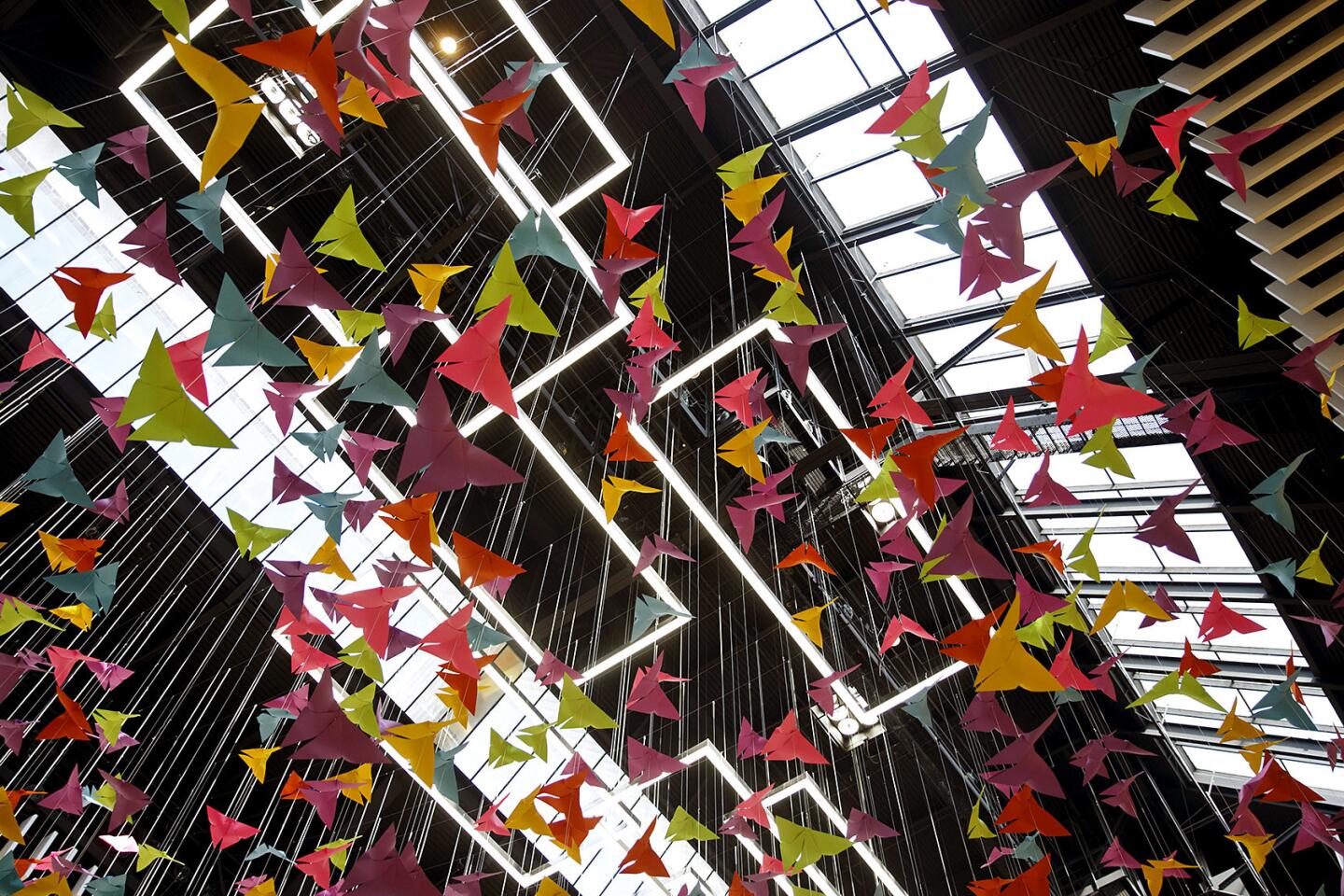As other malls die off, this one in Arcadia focuses on Asian shoppers

- Share via
When Taiwanese menswear brand SST&C opened its first U.S. store last year, the company bypassed glitzy shopping hubs such as Beverly Hills or South Coast Plaza in favor of a mall tucked into the San Gabriel Valley.
What Westfield Santa Anita lacks in name recognition, it makes up for with one huge edge: a growing stable of Asian retailers catering to its well-heeled Asian community.
“We thought it would be easier to introduce our brand to Asians than non-Asians,” said Claire Wang, general manager of SST&C, which stands for “Simple, Style, Trend & Casual Life.”
Since October 2015, Westfield Santa Anita has brought in 26 new retailers and restaurants, about two-thirds of which — 16 stores — originated in Asia or are Asian-flavored. The new lineup includes an outpost of Muji, the popular Japanese design store, and Din Tai Fung, a Taiwanese chain best known for its soup dumplings.
Westfield’s evolution comes as malls around the country are struggling with declining traffic and the rise of online shopping. Although that’s not a new trend, now it’s not just big department stores that are dying off; many once-popular brands such as BCBG and Wet Seal are also closing stores.
In January, only 21% of U.S. consumers shopped at an enclosed mall, a 30% plunge from five years ago, according to Britt Beemer, founder of America’s Research Group.
To survive, shopping centers are scrambling to bring in unique stores and restaurants. That’s a big shift from the days when they relied on the same arsenal of retailers selling to longtime consumers who came back season after season.
Some centers are welcoming pop-up shops in an effort to cater to millennials. Others are looking to specialize around a theme — such as home improvement, by bringing in paint and furniture stores.
“The malls of the future will be much more diverse than the malls of the past, when every mall had a J.C. Penney or Sears,” Beemer said. “The only way to win in the long term is to become different, and one way is appeal to an ethnic group.”
The population of Arcadia, the city where Westfield is located, is nearly 59% Asian, and predominantly Chinese, according to the U.S. Census Bureau. (Whites, the next biggest group, are a distant second, at 30.3%.)
Arcadia’s average household income is $110,070, compared with $87,877 for California as a whole.
The mall has changed dramatically in recent years, including a $20-million face-lift that wrapped up in 2014. That makeover included a outdoor play space for kids, new seating and fresh flooring.
William Hecht, chief operating officer at Westfield, said the updates are part of a concerted effort to evolve along with the local neighborhood. He said foot traffic and sales rose after the mall freshened up and brought in new retailers, though he declined to give details.
“There is definitely a large Asian community there that in the past we didn’t cater to as well as we liked,” Hecht said. “The plan was to bring in unique retailers and retailers that appeal to those that reside and work in that demographic area.”
SST&C’s Wang said malls in Asia have to be adaptable because they often have high turnover as brands swiftly open and close. That keeps the shopping experience exciting for consumers. On the other hand, American malls, Wang said, are used to keeping the same anchor stores for decades.
“It’s the environment — shoppers like to come here to find new things,” Wang said. “We thought only Asians would buy our clothes, but it’s not the case.” Up to half of its customers are Asian, she said, but around 40% are white.
Since its October launch, monthly sales at the SST&C store in Arcadia have climbed to about $50,000, Wang said. There is still lots of room to grow, she said. The chain’s stores in Taiwan — which at about 700 square feet are much smaller than Arcadia’s 2,000 square feet — rake in similar amounts per month.
“We’re just getting started in the U.S.,” Wang said. “We haven’t done any advertising or marketing yet, like we do in Taiwan. We want to be the place where guys shop for their prom suits.”
SST&C has opened up a second store in Los Cerritos Center in January and is eyeing other locations, some in areas with a heavy Asian demographic.
Westfield Santa Anita has also focused on bringing in restaurants — mostly of the Asian variety — to draw in shoppers who want to eat and shop in one place. Last year, the mall built a second-floor hall that customers have nicknamed “Food Alley.”
Alley eateries are sandwiched close together, resembling traditional food complexes known as hawker centers that are popular in countries such as Malaysia and Singapore. The decor includes a bike piled sky-high with boxes, which is reminiscent of bike couriers in Asia who haul around jaw-dropping loads.
Uncle Tetsu Japanese Cheesecake chose the alley to locate its first continental U.S. spot.
“It’s in the same theme as Din Tai Fung and other brands that are well-established in Asia, but emerging in the United States,” said Glenn Inanaga, senior vice president of Panda Restaurant Group. The company behind fast-food chain Panda Express is Uncle Tetsu’s American franchisee.
“We were trying to find places where people might be familiar with the brand,” he said.
Business so far has “exceeded our expectations,” Inanaga said. Panda is currently mulling offering additional cheesecake flavors and new products such as a Japanese cheese tart (which resembles an egg tart).
Shopper Christine Chen, 32, said she likes introducing non-Asian friends to the mall’s cuisines, which includes Korean, Japanese, Chinese and Malaysian. It helps that the alley — which Chen jokingly refers to as “the Asian hipster section” — isn’t as overwhelming as many Chinatowns can be.
“You would never imagine something like this in a Westfield mall,” said Chen, a doctor in Temple City. “But you’ve got to cater to the community. Who has the money here? Asians.”
Other mall developers have eyed the prosperous Arcadia market over the years. Rick Caruso, the mall magnate behind the Grove and the Americana at Brand, fought a multiyear battle to build a huge open-air shopping center right next to the Santa Anita race track before finally withdrawing in 2011.
The project, called the Shops at Santa Anita, was beset by opposition from some locals and rival Westfield, which forced Caruso to redo an environmental impact study. Westfield also backed ballot initiatives that would have prohibited Shops from charging for parking and limited its signage.
Some Asian brands say that the strategy of clustering together in an Asian community provides a base level of traffic and consumer interest that can be hard to replicate elsewhere.
Muji banked on its “very, very strong brand image” among Asians when it decided to open in Westfield Santa Anita in January, said Toru Tsunoda, president of Muji USA.
Muji hoped that local Asian shoppers would help prevent what happened at the chain’s other two Southland locations in Hollywood and Santa Monica, which both enjoyed big debuts but then saw sales drop slightly.
Interested in the stories shaping California? Sign up for the free Essential California newsletter »
“”When we first open a store, it sells very, very well,” Tsunoda said. “But it’s very difficult to maintain the business after time passes.” So far, sales have been 50% more than expected, with no visible slump.
“Having lots of Asians there helped,” he said.
The pack of under-the-radar brands is a draw to shoppers of other ethnicities as well.
Caprice Harper, 50, said she grew up in the area, relying on the shopping center as a regular hangout spot back when it had the typical big-box stores.
Now, Harper said she finds coming to the center exhilarating. She especially enjoys looking at the exotic fare at Chinese grocer Wing Hop Fung, which sells delicacies like birds nest ($1,899 for the biggest box) and dried sea cucumber ($268 per pound).
“It’s like going to another country,” said Harper, an archaeologist at the California Department of Transportation.
Follow Shan on Twitter @ByShanLi
MORE LOCAL NEWS
Glendale police vow not to enforce federal immigration laws
More to Read
Inside the business of entertainment
The Wide Shot brings you news, analysis and insights on everything from streaming wars to production — and what it all means for the future.
You may occasionally receive promotional content from the Los Angeles Times.
